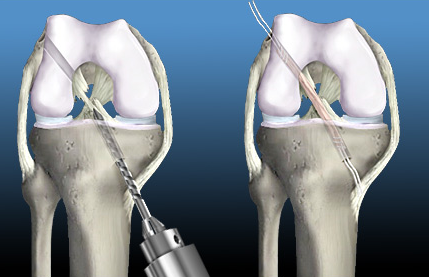ACL Reconstructions
ACL (anterior cruciate ligament) injuries are common among athletes and active individuals. When the ACL is torn or ruptured, it can lead to instability, pain, and limited mobility. In such cases, ACL reconstruction surgery is often recommended to restore stability and function to the knee joint. In this post, we will explore the basics of ACL reconstructions and the rehabilitation process for a successful recovery.
What is ACL Reconstruction? ACL reconstruction is a surgical procedure performed to replace a damaged or torn ACL with a graft. The graft can be sourced from the patient's own tissue (autograft) or a donor's tissue (allograft). The most commonly used autografts are the patellar tendon, hamstring tendon, or quadriceps tendon. The choice of graft depends on several factors, including the patient's age, activity level, and surgeon's preference.
Preparing for ACL Reconstruction: Before undergoing ACL reconstruction, thorough pre-operative evaluation and preparation are crucial. This may include:
Consultation with an orthopedic surgeon to assess the injury and determine the need for surgery.
Pre-operative physical therapy to improve knee strength, range of motion, and reduce swelling.
Understanding the surgical procedure, potential risks, and expected outcomes.
2. The Surgical Procedure: ACL reconstruction is typically performed arthroscopically, a minimally invasive technique that involves small incisions and the use of a tiny camera (arthroscope). During the surgery, the damaged ACL is removed, and the graft is secured in place using screws, buttons, or other fixation devices. The procedure aims to recreate the stability and function of the original ACL.
Post-Surgery Rehabilitation: Rehabilitation plays a crucial role in the success of ACL reconstruction. The rehabilitation program is typically divided into different phases, each focusing on specific goals. Some key aspects of ACL rehabilitation include:
Protecting the surgical site and managing pain and swelling.
Gradual restoration of knee range of motion through gentle exercises and stretching.
Strengthening exercises to improve quadriceps, hamstring, and calf muscle strength.
Proprioception and balance training to enhance joint stability.
Gradually reintroducing sports-specific activities and functional movements.
Working closely with a physiotherapist to monitor progress and make necessary adjustments to the rehabilitation plan.
3.Recovery Timeline and Expectations: The recovery timeline for ACL reconstruction varies depending on individual factors such as the patient's age, overall health, adherence to rehabilitation, and the type of graft used. Generally, it takes several months for the graft to heal and for the patient to regain full strength and function. Returning to sports or high-impact activities usually occurs between 6 to 12 months post-surgery, but this timeline can vary.
ACL reconstruction is an effective surgical intervention for individuals with ACL injuries, helping them regain stability and return to their desired level of activity. The procedure is followed by a comprehensive rehabilitation program that focuses on restoring strength, range of motion, and functional abilities. By diligently following the rehabilitation plan and working closely with a physiotherapist, patients can achieve a successful recovery and resume their active lifestyles.




